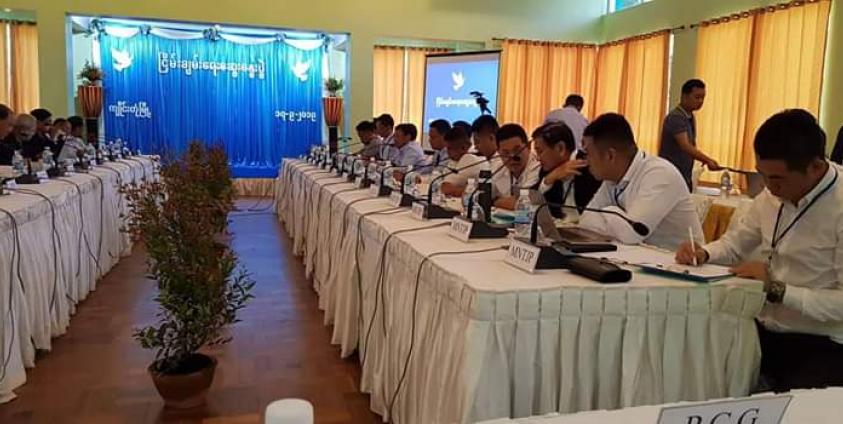On September 17, government peace negotiators conducted a highly anticipated meeting with members of the Northern Alliance in the town of Kengtung, Shan State. The session ended with no bilateral ceasefire agreement. However, Zaw Htay, director general of the President’s Office, told reporters that significant progress had been made. “The outcome of the meeting was good and satisfactory,” U Zaw Htay said.
He explained that although the government had planned to finally agree on a ceasefire, the deal could not be ratified by all members of the Northern Alliance. It includes the Kachin Independence Army (KIA), Arakan Army (AA), Ta’ang National Liberation Army (TNLA), and the Myanmar Democratic Alliance Army (MNDAA).
Another round of talks are slated for October, but the Myanmar army’s unilateral ceasefire ends on September 21st. “It could be problematic if we can’t sign one before the deadline, because we won’t know what to do with the results of this meeting,” U Zaw Htay said.
Still, Ta’ang National Liberation Army General Secretary Tar Bone Kyaw remained optimistic. “It yielded good results,” he said. “We agreed on some procedures to sign agreements, which could stop the fighting.” In addition to further talks, these agreements included establishing special liaison offices and the safe return of displaced civilians.
Conflict with the Northern Alliance is not new, but a recent outbreak of violence in August has displaced thousands of civilians. It also disrupted border trade and sent both sides scrambling for a peace deal. The Myanmar army has declared unilateral ceasefires of its own, although Norther Alliance members have accused the army of violating them. Whether or not both sides can agree on a lasting peace remains to be seen in October.


